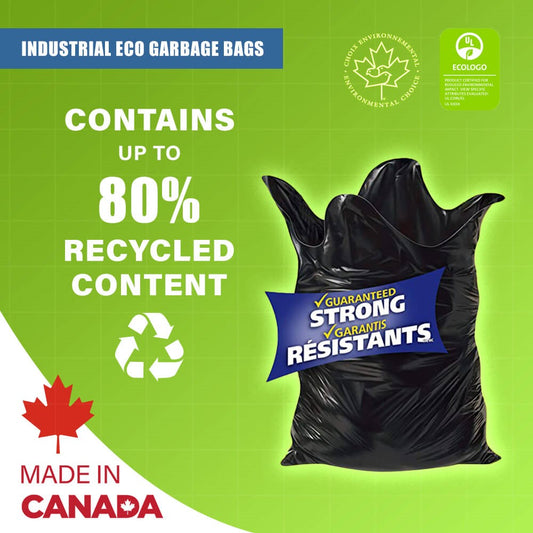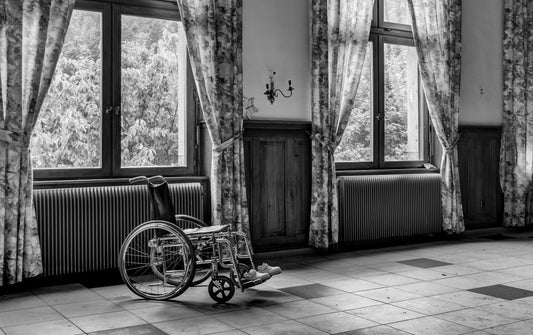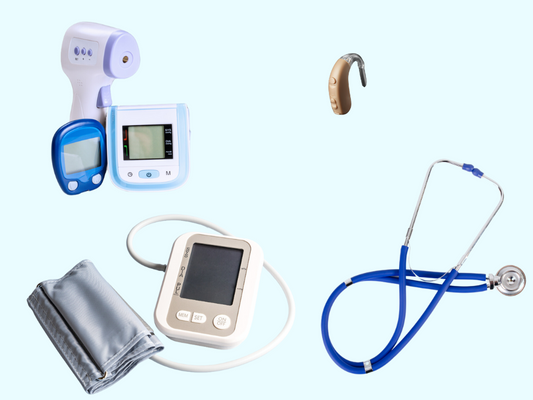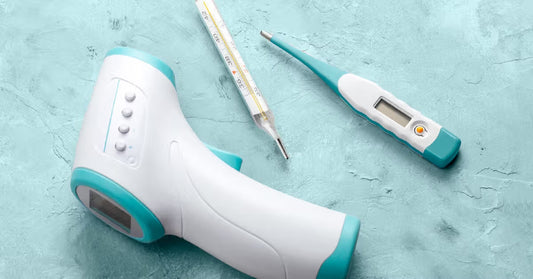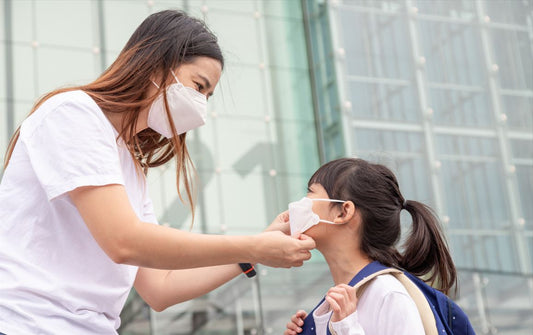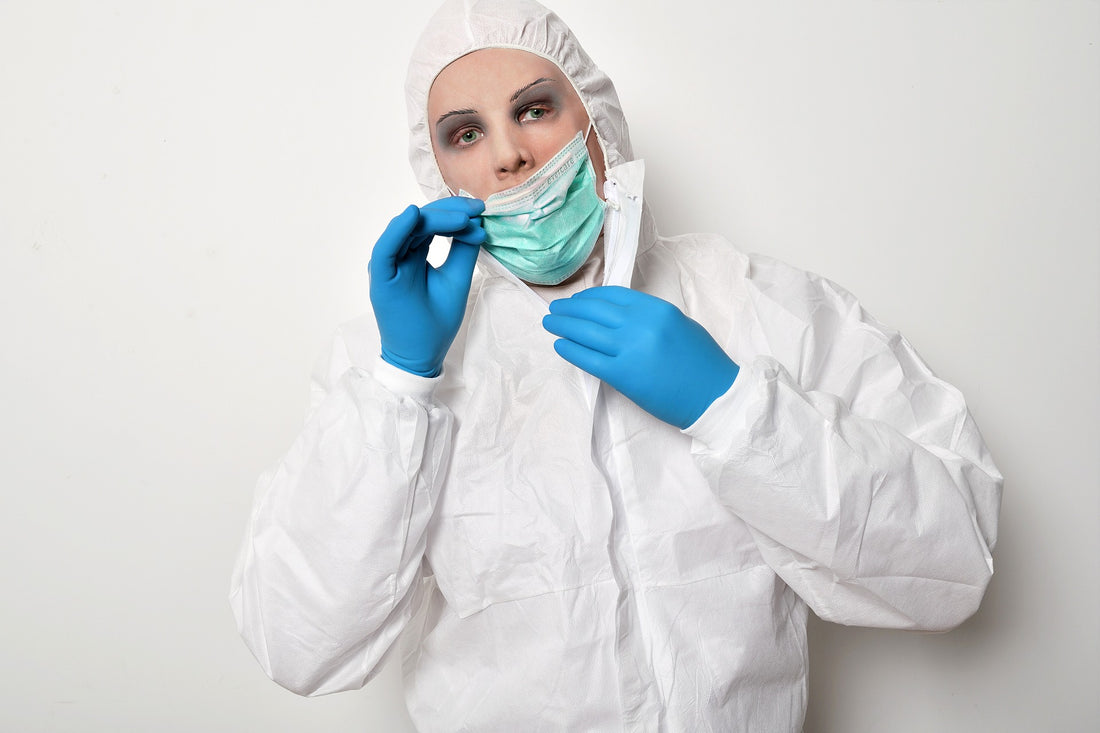
What Is Personal Protective Equipment ? And Why Is It Important?
Personal Protective Equipment (PPE) protects against various hazards that threaten our well-being, such as physical, chemical, biological, or radioactive hazards. The importance of PPE has grown significantly in industries where workers face regular exposure to hazardous substances. PPE refers to protective clothing, equipment, and accessories designed to protect against potential hazards in the workplace or other environments. It includes face masks, gloves, helmets, and lab coats that protect us from exposure to harmful substances and infectious agents.
Whether you work in a hospital, laboratory, or any other high-risk environment, investing in the right PPE is crucial to keep yourself and those around you safe. If you are still contemplating whether or not to buy lab coats, medical gowns, or any other PPE, this guide is for you.
In this article, we will delve into the significance of Personal Protective Equipment (PPE) and its various types and highlight the reasons why it’s crucial to prioritize safety in various settings
Personal Protective Equipment, And Its Importance
Personal Protective Equipment (PPE) encompasses clothing, helmets, gloves, and other equipment or garments to shield the body from potential injury or infection. It is widely used across various industries, including but not limited to construction, manufacturing, and healthcare, as it plays a significant role in preventing workplace injuries and illnesses.
PPE is a barrier between the wearer and the hazards they are exposed to. It helps to reduce the risk of exposure to harmful substances, including chemicals, radiation, and infectious agents. It also helps to prevent injuries from physical hazards such as falls, cuts, and punctures.
Kinds Of Personal Protective Equipment (PPE)
Numerous variations of PPE are available, each designed to safeguard the wearer from specific hazards. Examples of commonly used PPE types are:
- Face And Eye Protection – safety glasses, face shields, and goggles
- Respiratory protection – respirators, masks, and filters
- Hand Protection – gloves, mitts, and sleeves
- Foot Protection – boots, shoes, and covers
- Head Protection – helmets and hard hats
- Body Protection – coveralls, jackets, and vests
Appropriate Times to Utilize Personal Protective Equipment
PPE should be used when there is a risk of exposure to hazardous substances or environments. Employers are responsible for providing appropriate employee PPE and ensuring it is used correctly.
Using Personal Protective Equipment (PPE) is mandatory when handling hazardous substances or exposure to hazardous environments. It should also be worn when performing tasks with a high risk of injury, such as using power tools or working at heights.
Effective Utilization of Personal Protective Equipment (PPE)
To ensure maximum protection, it is imperative to correctly utilize Personal Protective Equipment (PPE). Employers are responsible for training their employees on the proper usage of PPE, which encompasses the safe procedure of wearing and removing it.
Adhering to the manufacturer’s instructions is crucial when using Personal Protective Equipment (PPE), as each type of PPE entails specific guidelines for its utilization. For instance, certain respirators require a seal around the user’s face to be effective. If a respirator is used incorrectly, it may fail to provide the required level of protection, hence resulting in inadequate protection being granted.
How To Care For Personal Protective Equipment
Employers should educate their employees on how to care for and maintain the PPE they provide. Some general tips for caring for PPE include:
- Regularly inspecting the PPE for signs of wear or damage.
- Cleaning the PPE after each use, using the appropriate cleaning materials.
- Storing the PPE correctly when not in use to prevent damage or contamination.
- Replacing the PPE when it becomes worn or damaged.
How To Choose Personal Protective Equipment
Selecting suitable Personal Protective Equipment (PPE) for a workplace may be intimidating, given the many options available. It’s crucial to carry out a thorough risk assessment to identify the hazards they may encounter to ensure the safety of your employees.
Depending on your budget, you can find gloves, helmets, or medical gowns for sale in Canada. But before buying these PPE, it’s important to consider factors such as comfort, fit, and ease of use. PPE that is ill-fitting, uncomfortable, or difficult to use may discourage workers from wearing it correctly, which can reduce its effectiveness. To maximize the protection afforded by PPE, employers must also ensure that the equipment meets the relevant safety standards. So, When selecting PPE, it’s important to prioritize comfort and quality to ensure maximum protection for workers.
Obstacles to Implementing Personal Protective Equipment (PPE)
PPE can reduce the risk of injury but can’t guarantee safety; various challenges arise regarding its implementation. These challenges can hinder the effectiveness of PPE and increase the risk of workplace injuries and illnesses. So here, we will explore some challenges in adopting PPE and discuss potential solutions.
Cost
The challenge in the adoption of PPE is the cost. Due to the cost involved, certain employers may exhibit reluctance to invest in PPE.
However, the cost of not using PPE can be even higher regarding lost productivity, medical expenses, and workers’ compensation claims.
To address this challenge, employers should evaluate the cost of PPE against its effectiveness in protecting workers. It can involve conducting a cost-benefit analysis and considering the potential long-term benefits of preventing workplace injuries and illnesses. Employers can also consider using cost-effective alternatives to traditional PPE, such as reusable respirators or noise-canceling headphones.
Limited Availability
Another challenge in the adoption of PPE is limited availability. In some cases, PPE may be difficult to obtain due to supply chain disruptions or high demand. It can leave workers without adequate protection, increasing the risk of injury or illness.
To address this challenge, employers should work with suppliers to ensure an adequate supply of PPE. It may require the identification of substitute suppliers or devising backup strategies in the event of supply chain disruptions. Employers can also consider stockpiling PPE or reusable PPE to reduce reliance on disposable equipment.
Training and Education
A third challenge in adopting PPE is the lack of training and education on its proper use. Workers may not understand how to use PPE correctly or be unaware of the hazards they are being protected against. It can result in ineffective use of PPE or workers not using it at all.
To address this challenge, employers should provide comprehensive training and education on the proper use of PPE. It can involve hands-on demonstrations, written instructions, and regular refresher courses. Employers should also ensure workers understand the hazards they are protected against and the consequences of not using PPE.
Conclusion
In conclusion, Personal Protective Equipment (PPE) ensures workers’ safety and health in many industries. It acts as a barrier between the wearer and the hazards they are exposed to, helping to reduce the risk of injury and illness. Employers are responsible for evaluating workplace hazards and providing appropriate PPE to their employees, who are equally accountable for utilizing and wearing the provided PPE correctly. By following the guidelines for choosing, using, and caring for PPE, we can ensure that it remains effective and provides the required protection.
